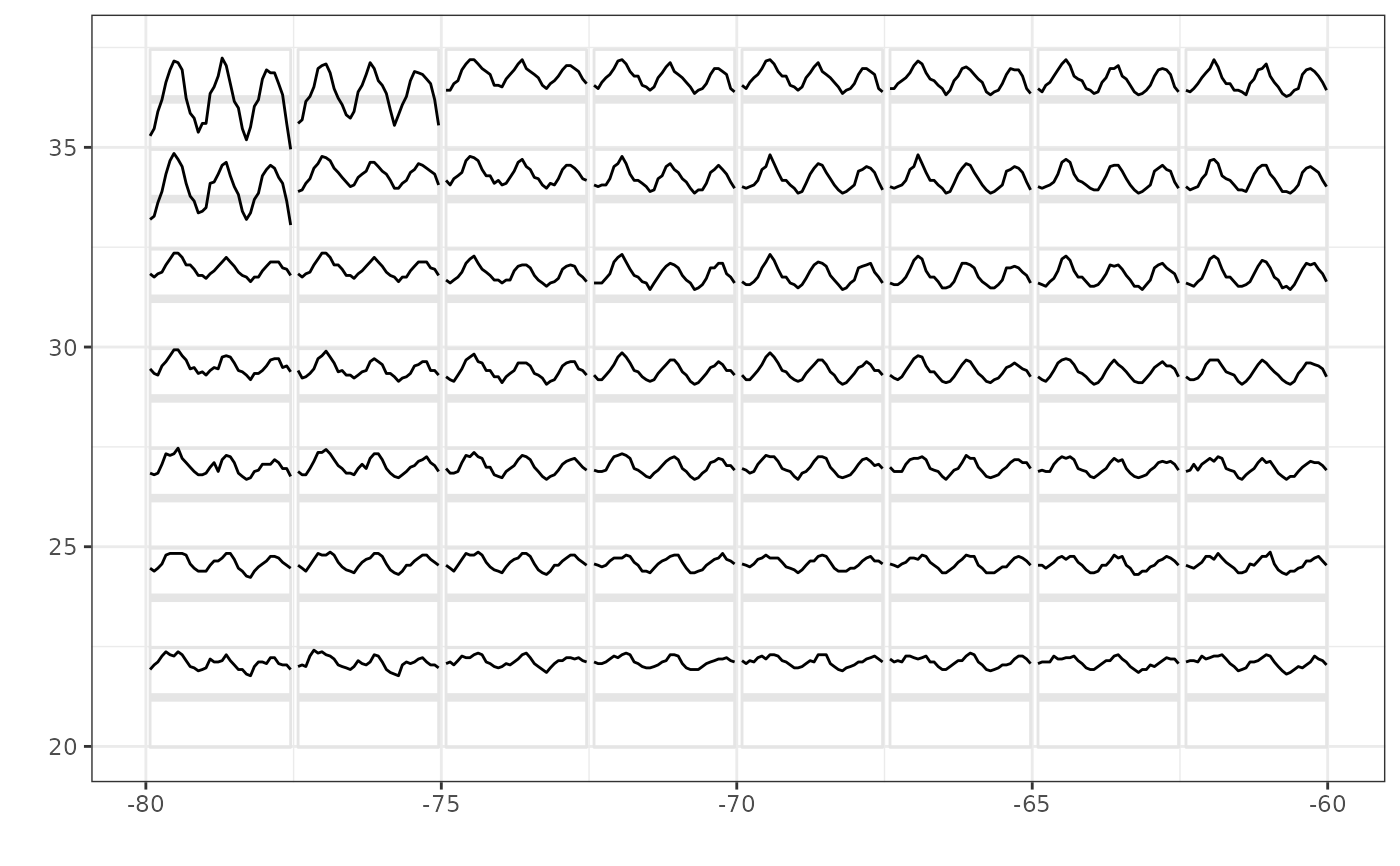Create the data needed to generate a glyph plot.
Arguments
- data
A data frame containing variables named in
x_major,x_minor,y_majorandy_minor.- x_major, x_minor, y_major, y_minor
The name of the variable (as a string) for the major and minor x and y axes. Together, each unique
- polar
A logical of length 1, specifying whether the glyphs should be drawn in polar coordinates. Defaults to
FALSE.- height, width
The height and width of each glyph. Defaults to 95% of the
resolutionof the data. Specify the width absolutely by supplying a numeric vector of length 1, or relative to the- y_scale, x_scale
The scaling function to be applied to each set of minor values within a grid cell. Defaults to
identityso that no scaling is performed.
Examples
# Small function to display plots only if it's interactive
p_ <- GGally::print_if_interactive
data(nasa)
nasaLate <- nasa[
nasa$date >= as.POSIXct("1998-01-01") &
nasa$lat >= 20 &
nasa$lat <= 40 &
nasa$long >= -80 &
nasa$long <= -60,
]
temp.gly <- glyphs(nasaLate, "long", "day", "lat", "surftemp", height = 2.5)
#> Using width 2.38
p_(ggplot2::ggplot(temp.gly, ggplot2::aes(gx, gy, group = gid)) +
add_ref_lines(temp.gly, color = "grey90") +
add_ref_boxes(temp.gly, color = "grey90") +
ggplot2::geom_path() +
ggplot2::theme_bw() +
ggplot2::labs(x = "", y = ""))
